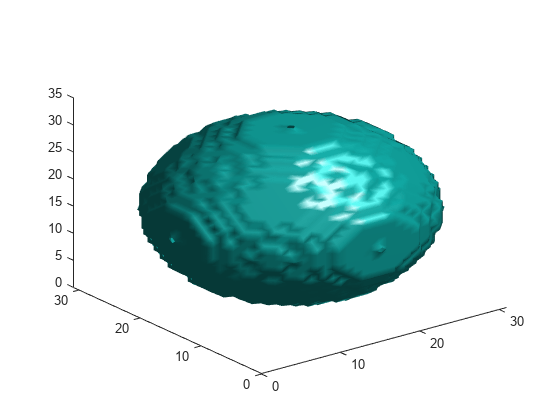strel
Morphological structuring element
Description
A strel object represents a flat morphological
structuring element, which is an essential part of
morphological dilation and erosion operations.
A flat structuring element is a binary valued neighborhood, either 2-D or
multidimensional, in which the true pixels are included in the
morphological computation, and the false pixels are not. The center
pixel of the structuring element, called the origin, identifies the
pixel in the image being processed. Use the strel function
(described below) to create a flat structuring element. You can use flat structuring
elements with both binary and grayscale images. The following figure illustrates a flat
structuring element.

To create a nonflat structuring element, use offsetstrel.
Creation
Syntax
Description
Arbitrary Neighborhood Shape
SE = strel( creates a flat
structuring element with specified neighborhood
nhood)nhood.
2-D Geometric Neighborhood Shapes
SE = strel("diamond", creates
a diamond-shaped structuring element, where r)r specifies
the distance from the structuring element origin to the points of the
diamond.
SE = strel("disk", creates a
disk-shaped structuring element, where r)r specifies the
radius.
SE = strel("octagon", creates
an octagonal structuring element, where r)r specifies the
distance from the structuring element origin to the sides of the octagon, as
measured along the horizontal and vertical axes. r must
be a nonnegative multiple of 3.
SE = strel("rectangle",
creates a rectangular structuring element of size
m-by-n.[m n])
3-D Geometric Neighborhood Shapes
SE = strel("cube", creates a
3-D cubic structuring element whose width is w)w
pixels.
SE = strel("cuboid",
creates a 3-D cuboidal structuring element of size
m-by-n-by-p
pixels. [m n p])
The following syntaxes still work, but offsetstrel is the preferred way
to create these nonflat structuring element shapes:
SE = strel("arbitrary",nhood,h), wherehis a matrix of the same size asnhoodcontaining the height values associated with each nonzero element ofnhood.SE = strel("ball",r,h,n)
Input Arguments
Properties
Object Functions
Examples
Tips
Structuring elements that do not use approximations (
n= 0) are not suitable for computing granulometries.
Algorithms
For all of the geometrical shapes, structuring elements are constructed using a family
of techniques known collectively as structuring element
decomposition. The principle is that dilation by some large structuring
elements can be computed faster by dilation with a sequence of smaller structuring
elements. For example, dilation by an 11-by-11 square structuring element can be
accomplished by dilating first with a 1-by-11 structuring element and then with an
11-by-1 structuring element. This results in a theoretical performance improvement of a
factor of 5.5, although in practice the actual performance improvement is somewhat less.
Structuring element decompositions used for the "disk" shape is an
approximations—all other decompositions are exact.
References
[1] van den Boomgard, R, and R. van Balen, "Methods for Fast Morphological Image Transforms Using Bitmapped Images," Computer Vision, Graphics, and Image Processing: Graphical Models and Image Processing, Vol. 54, Number 3, pp. 252–254, May 1992.
[2] Adams, R., "Radial Decomposition of Discs and Spheres," Computer Vision, Graphics, and Image Processing: Graphical Models and Image Processing, Vol. 55, Number 5, pp. 325–332, September 1993.
[3] Jones, R., and P. Soille, "Periodic lines: Definition, cascades, and application to granulometrie," Pattern Recognition Letters, Vol. 17, pp. 1057–1063, 1996.

